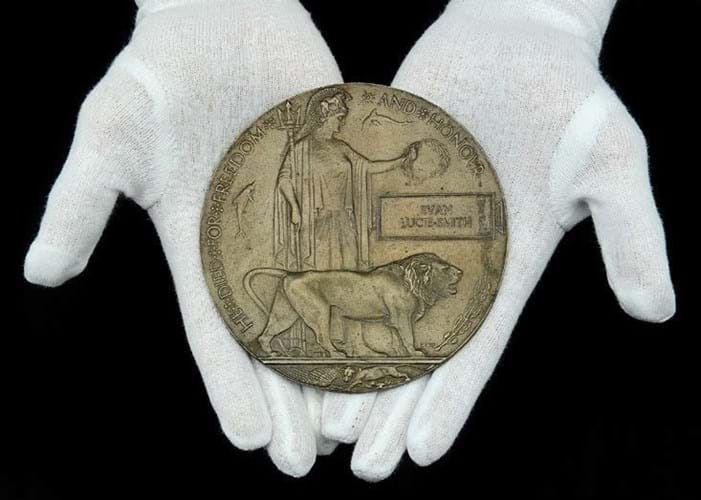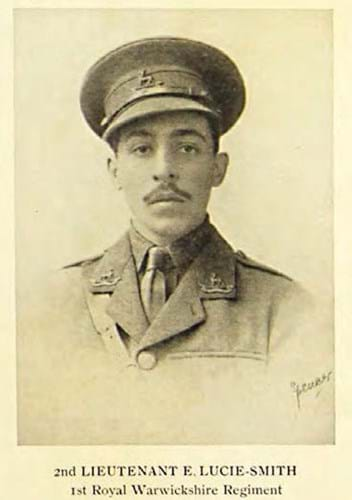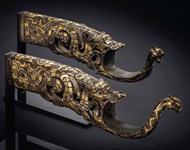
The plaque of Lt Euan Lucie- Smith, 1st Battalion, Royal Warwickshire Regiment, is estimated at £600-800 in the Dix Noonan Webb sale on November 12. He was killed in action on April 25, 1915, at the Second Battle of Ypres.
The plaque was discovered by a former Member of the European Parliament, James Carver, who is a keen collector of medals relating to West African soldiers of the Victorian and Edwardian era. He spotted it for sale on the open market, bought it on a hunch, and has since researched Lucie-Smith’s military career and family background.
“Until now, the best-known black soldier of the First World War has been Walter Tull. However, I now believe Lucie- Smith to be the first black officer,” said Carver. “His background was quite different to Tull’s – coming from a privileged Jamaican family, he was undoubtedly from the so-called ‘Officer Class’, having attended two English private schools.”
Tull was commissioned into a British army regiment on May 30, 1917, and killed in action during the First Battle of Bapaume on March 8, 1918.
Lucie-Smith was born in Jamaica, on December 14, 1889, to John Barkley Lucie-Smith, (the Postmaster of Jamaica), and Catherine ‘Katie’ Lucie- Smith (nee Peynado Burke). His father hailed from a line of distinguished white colonial civil servants.
His mother was a daughter of the distinguished ‘coloured’ lawyer and politician Samuel Constantine Burke, who campaigned for Jamaican constitutional reform in the late 19th century through his desire for Jamaica to have greater control over her own affairs than Whitehall.
Euan Lucie-Smith was educated in England, initially at Berkhamsted School before Eastbourne College (his address during his Great War service is noted as Berkhamsted School).
He returned to Jamaica but six weeks after the outbreak of war he was commissioned as a Second Lieutenant into the regular force of the Royal Warwickshire Regiment.
He has no known grave and is commemorated on Panel 2 to 3 of the Ploegsteert Memorial, Belgium.















